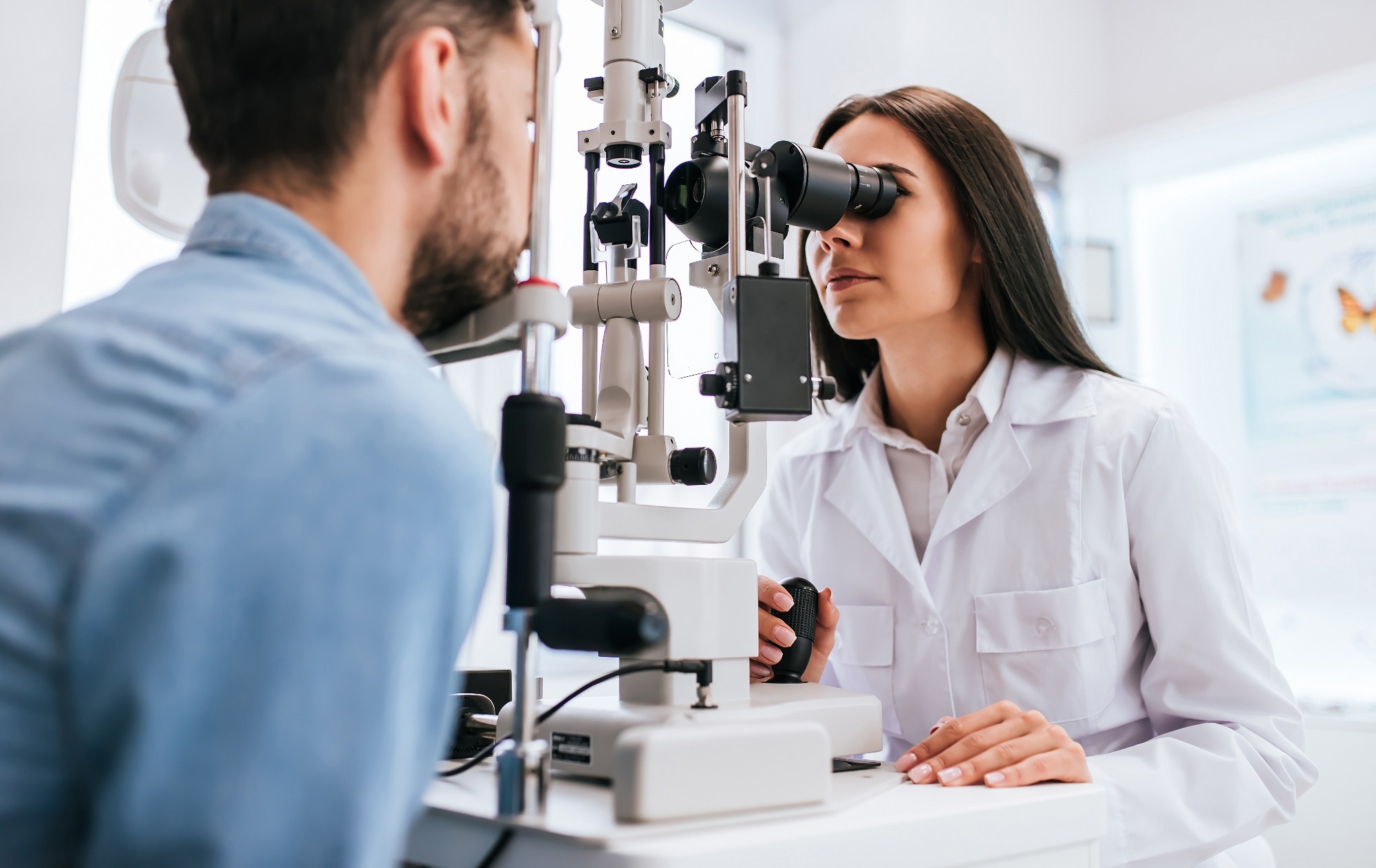Albinism
Cause and symptoms
GPR143 gene
Epidemiology
Diagnosis and treatment
References
Further reading
Ocular albinism (OA) is an inherited genetic condition that primarily affects the pigments in the eyes.
 Ocular albinism is an inherited genetic condition that primarily affects the pigments in the eyes.Image Credit: 4 PM production/Shutterstock.com
Ocular albinism is an inherited genetic condition that primarily affects the pigments in the eyes.Image Credit: 4 PM production/Shutterstock.com
The iris and retina pigmentation is lowered by ocular albinism. Unlike certain other types of albinism, ocular albinism does not affect skin or hair color. Ocular albinism type 1 is the most common form of this condition, affecting at least one in every 60,000 males.
Mutations in the G-protein coupled receptor 143 (GPR143) gene, also known as OA1, cause ocular albinism. The Nettleship-Falls type, also known as type 1, is the most frequent form of ocular albinism.
Albinism
Albinism is a collection of rare genetic disorders characterized by defective melanosome development, melanin pigment synthesis, and distribution in melanocytes. Melanocytes are neural crest cells that can be cutaneous (hair and skin) or extracutaneous (eye and cochlea). Human albinism is classified into two types: oculocutaneous albinism (OCA) and ocular albinism (OA).
Oculocutaneous albinism (OCA) is an autosomal recessive condition that affects to variable degrees all pigmented tissues in the eyes, hair, and skin. OCA is predicted to affect one in every 20,000 people. OCA is divided into eight clinical subtypes, OCA1-8, that are caused by mutations in seven different genes.
Cause and symptoms
Mutations in the GPR143 gene cause ocular albinism. This gene codes for a protein that is involved in the pigmentation of the eyes and skin. It aids in the regulation of the formation of melanosomes. These are cellular structures that create and store the pigment melanin. Melanin is the pigment that imparts color to skin, hair, and eyes, and is also involved in normal vision in the retina.
Ocular albinism is usually X-linked. Historically, X-linked ocular albinism was also known as Nettleship-Falls ocular albinism, after the two doctors who discovered its X-linked heredity. A few years ago, a series of families were recorded in which children of typically pigmented parents had albinism-like ocular symptoms but no major skin involvement (also known as cutaneous hypopigmentation). Other types of ocular albinism are significantly more uncommon and may be accompanied by additional indications and symptoms, such as hearing loss.
Visual acuity and stereoscopic vision are characteristics of ocular albinism. Even though the eyesight loss is permanent, it does not deteriorate over time. Other eye abnormalities connected with this condition include nystagmus (quick, involuntary eye movements), strabismus, and photophobia.
Many affected people also have optic nerve problems, affecting how visual information is carried from the eye to the brain. Unlike certain other types of albinism, ocular albinism does not affect the color of the skin or hair.
People with OA may have a slightly lighter complexion than their family members, but these differences are usually minor. Astigmatism, freckling, and abnormal macular morphology are also frequently observed. Occasional symptoms include myopia and neoplasm of the skin.
GPR143 gene
GPR143 is found on the Xp22 chromosome. It traffics to melanosome membranes and regulates melanosome gene transcription as well as melanosome size by interfering with the delivery of melanin-related protein (MRP) to mature melanosomes.
Impaired GPR143 signaling alters melanosome morphology, resulting in the production of larger melanosomes, called macromelanosomes. It also disrupts melanosome motility and leads to an overall reduction in melanocyte and RPE melanosome counts.
The majority of GPR143 gene mutations change the size or structure of the GPR143 protein. Many of these genetic alterations prevent the protein from reaching melanosomes, where it can regulate its proliferation.
In other circumstances, the protein reaches melanosomes normally, but mutations prevent it from functioning properly. Melanosomes in skin cells and the retina can become excessively enlarged as a result of these changes.
Researchers are unsure how these massive melanosomes are linked to vision loss and other eye problems in persons with ocular albinism.
Epidemiology
Ocular albinism type 1 is the most common form of ocular albinism, affecting at least one in every 60,000 males. Females are far less likely to exhibit the traditional signs and symptoms of this condition.
Diagnosis and treatment
The occurrence of infantile nystagmus, iris translucency and significant hypopigmentation of the ocular fundus peripheral in males with slightly hypopigmented skin suggests OA. Foveal hypoplasia decreased visual acuity, and abnormal optic pathway projection, as seen by crossing asymmetry of cortical responses on visual evoked potential testing, can also be utilized to make the diagnosis. In an obligate carrier female, X-linked inheritance is demonstrated by either a family history consistent with X-linked inheritance or the presence of classic carrier symptoms (irregular retinal pigmentation and modest iris transillumination). GPR143 molecular genetic testing finds harmful mutations in more than 90% of affected males.
Early detection and correction of refractive defects, photo aversion treatment with sunglasses or special filter glasses, and prismatic spectacle correction for incorrect head posture can aid in the management of OA. The management can also include an annual ophthalmologic examination as well as emotional and educational support.
References
Further Reading